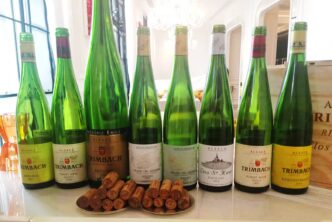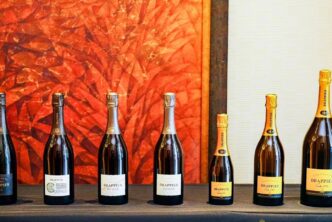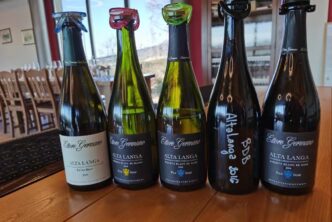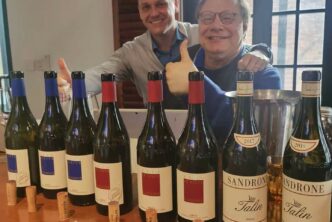Fürst Löwenstein is a noble German wine estate (that is actually about a lot more than just wine) that boasts more than 400 years of history. There are actually two (plus one) different estates: the two that are being currently actively managed by the family are in the Rheingau and in the Franken, but there is also a property in the Baden that is currently being rented out. In fact, the family once owned estates in many different places, including on the Main and in the Odenwald, in Bohemia, Lorraine, the Pfalz and in what is now Belgium. In 2010, the production sites were merged into one, at the noble family home of the Löwenstein castle in Kleinheubach. The state-of-the-art cellar was created in the Maarstal, an eighteenth century Baroque-period sandstone building, and right behind it, in two other buildings, the wine press room with offices, vinothèque and sensory room, and the wine warehouse.
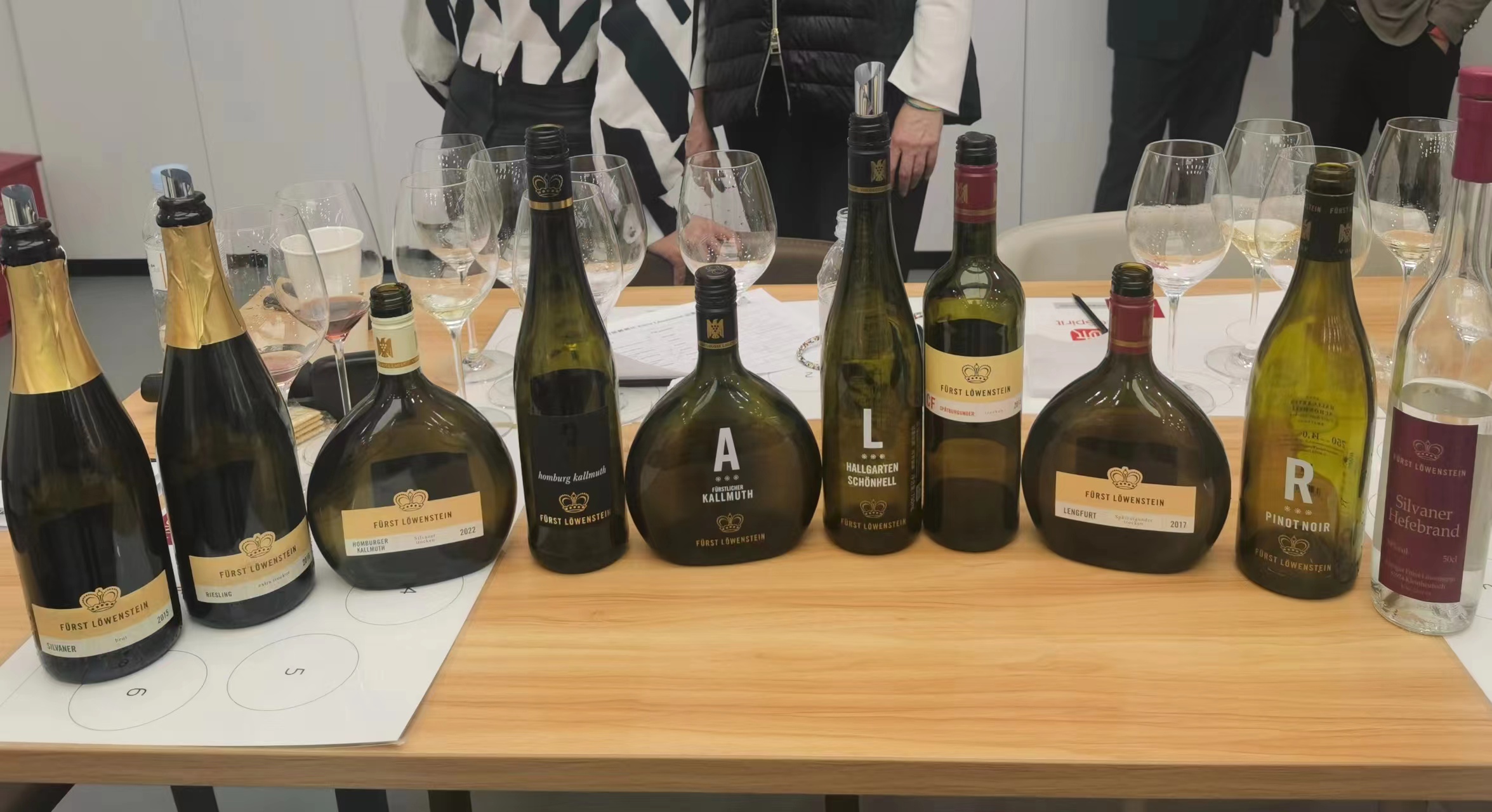
The Löwenstein family is well-known today for making classically dry wines. This has been traditionally so at Fürst Löwenstein, where the making of such wines is neither a recent faddish endeavour nor an attempt to cash in on current market preferences. Rather, it has always been a way of life at the estate, one that reflects the geologic and climate realities of the estate’s vineyards. And the winemaking tradition of the family has been alive and strong in Germany since a very, very long time. It was in 1611 that the family began working in wine; later, in the nineteenth century, that it acquired the properties that most distinguish it today, the famous Kallmuth hillside of the Franken and the Hallgarten vineyards of the Rheingau were bought. Then, in 1919, the family was among the founding members of the quality German vintner’s association, the (known as VDP, for short): Today the estate is run by Princess Stephanie zu Löwenstein (or Stephanie Prinzessin zu Löwenstein, in German) who oversees production of many superb wines from almost fifty hectares of vines scattered throughout their properties. Last but not least, note that some of the Franken wines are bottled in the traditional and immediately recognizable bocksbeutel, the typical Franken wine bottle that was developed many centuries ago. Its design, short, large and flattened on the sides, was meant to make it easier to carry two such bottles at a time tied together with a chord and then slung across a horse’s back.

Vineyards and wines
The winemaking is overseen by Peter Arnold, a local who grew up walking the Kallmuth vineyard in Franken, to then go on to earn his viticulture and oenology degree from Geiseheim and to work in Spain and South Africa before finally being “brought back home” to work at the winery circa 2015. The estate believes in organic farming and besides more common measures such as using indigenous yeasts for fermentation, it has also gone so far as to develop bee colonies and bee meadows. A really noteworthy vineyard that is in the family fold is the monopole Homburg Kallmuth, in the Franken, where it owns about fifteen hectares of vineyards in total.
The Kallmuth vineyard is an especially famous hillside patch of beautiful old vines: its soil boasts shell limestone and red sandstone, which coupled to the relatively hot microclimate that characterizes the vineyard, tends to give wines of saline minerality, powerful flesh and yet lip-smacking acidity too. In the Kallmuth, the Silvaner variety can give truly world-class, outstanding, white wines that are very complex and deep and that are quite unlike Silvaner wines made elsewhere in the world. Another Franken site farmed by the estate is the Oberrot (Lengfurt). The family’s Franken vineyards are planted to roughly 65% Silvaner, 20% Spätburgunder (Pinot Noir), 10% Riesling and 5% Sauvignon Blanc. In fact, it was Stephanie’s husband, Hereditary Prince Karl Friedrich (who unfortunately passed away at an early age) who was one of the first, and few, to have had the courage and desire, in 2008, to plant Sauvignon Blanc in their vineyards. To be clear and complete, I will just mention that I have seen reported in various websites that the estate also grows Zweigelt, but in speaking with the Princess for this article, she made no mention of having any Zweigelt whatsoever.
Over in the Rheingau, the estate is just as fortunate in its vineyard holdings, given that the vineyards of the commune of Oestrich-Winkel have been famous throughout the centuries. The Löwenstein family bought these vineyards in 1875; it will be of extreme interest to all those who love German wine to know that these vineyards were leased to Schloss Vollrads (another extremely famous and noble German wine producer) until 1997. The plots are located in some of this specific area’s best vineyard sites, including the Hendelberg, the Jungfer and the ultra-famous Schönhell Hallgarten); although they cover over twenty-two hectares, Fürst Löwenstein chooses to use the grapes from about a third of this vineyard extension only, and leases out the rest. Unlike in the Franken, here the plantings are of Riesling (80%) and Frühburgunder and Spätburgunder (20%). As mentioned, previously, the family also owns seven hectares of vineyards in the Baden [the two single vineyards of the Josefsberg and the Kemelrain (Bronnbach)], but leases these out cooperatively.
The wines in this tasting report
All the wines in this report were tasted by me back in March 2024 in Shanghai, in the presence of the Princess and her local importer.
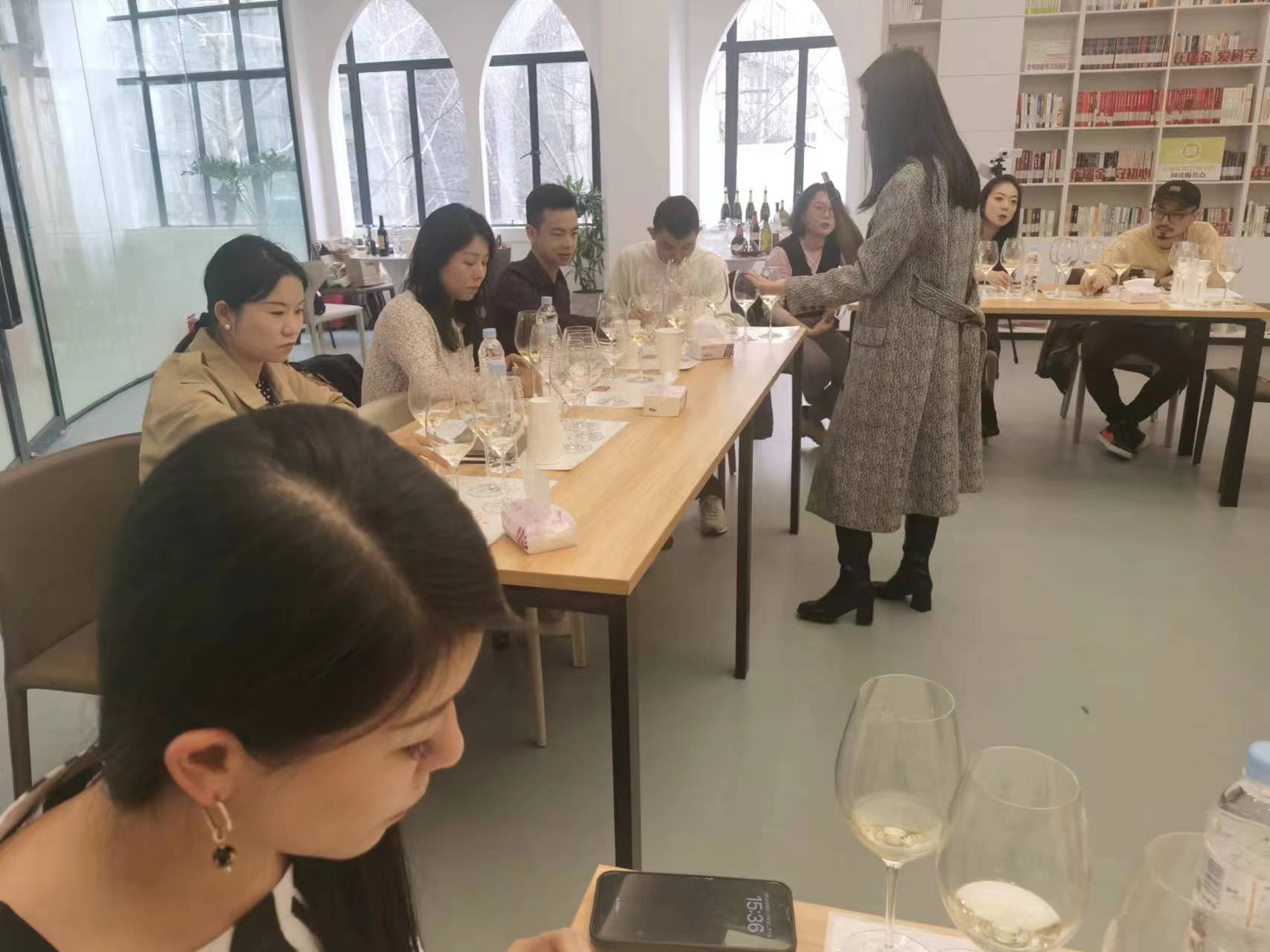
Fürst Löwenstein 2022 Silvaner Trocken Homburg Kallmuth Erste Lage Franken 92
Luminous straw-green. Laser-like precision to the firm pear, quince, celery and mineral aromas and flavours, complicated by nuances of nuts, chamomile and dry spices. Reveals lovely balance (1.5 g/L r.s. and 5.3 g/L total acidity) on the long, subtly scented and nuanced finish that has a bittersweet element to it. This is a very beautiful wine boasting sneaky concentration. This remained five months on the lees and was bottled in the characteristic bocksbeutel. Even though I am not usually a fan of wines made from hot sites (and the Homburg Kallmuth certainly is: with as much as an 80% slope gradient in some parts of the vineyard, the heat can get stifling during hot summer days, as much as 68 degrees Celsius!), I love the wines from the Homburg Kallmuth, finding them to be some of the deepest and most interesting Silvaner wines of all, and that, though powerful, are also very elegant. About 10,000 bottles made. This was one of the stars of my tasting; there’s a lot of wine for the money here. Drinking window: 2024-2030.
Fürst Löwenstein 2019 Homburg Kallmuth Dreiklang Erste Lage 91
Bright straw-green with some gold. Aromas of gooseberries and fresh citrus, with a spicy nuance and a hint of almonds and smoke. Then rich and layered in a medium-bodied package that is clean and long on the rising, classically dry, long finish. A blend of Silvaner (60%), Sauvignon Blanc (20%) and Riesling (20%), this fresh, juicy and enticing white greets you first with its obvious Sauvignon aromas, then it’s the acidity of the Riesling that takes over, and finally it is all tied together by the spiciness and savouriness of the Silvaner. Offers beautiful sugar-acid balance (4.5 g/L r.s. and 5.2 g/L total acidity); and despite that 4.5 g/L residual sugar might make you think the wine tastes off-dry, it really doesn’t, thanks to the over 5 g/L total acidity. The grapes are slightly late-harvested so as to give a wine of ripe, glyceral impression, but in which the grapes are vinified to relative dryness. The three varieties are fermented separately and then assembled prior to bottling. Drinking window: 2024-2028.
Fürst Löwenstein 2018 Silvaner ‘Asphodil’ Homburg Kallmuth Grosses Gewächs Trocken 95
Very pretty crystalline straw green colour with delicate golden nuances. Very smoky and mineral at first, with slowly unfolding white peach, liquid minerality, caraway seed, glazed apricot, and nutmeg on the complex, penetrating nose. Then showcases truly impressive density and depth, with rich, deep, complex flavors of minerals, fresh citrus fruits, aromatic herbs and spices, complicated by a delicately nutty overlay. Finishes long and extremely pure, with lingering echoes of jagged, intense minerality. Perhaps the best-balanced of all the wines in this tasting report (1.5 g/L r.s. and 6.2 g/L total acidity), this is also the most pure, complex and concentrated of all the wines that came across my taste buds in this tasting session. The wine’s name derives from the lily flower, planted by the ancient Romans at the top of the Kallmuth hillside already millennia ago. Drinking window: 2024-2040.
Fürst Löwenstein 2016 Riesling Trocken L ‘Sophie’ Hallgarten Schoenhell Grosse Lage Rheingau 90+
Vivid pale straw-gold colour. Very pretty on the nose, with citrus fruit, white flowers and minerals first exploding from the glass, and then followed by a diesel fuel nuance that increases with aeration. In the mouth, a slightly honeyed and spicy edge emerges on the long back end that also features an enticing hints of red and dark berries. Becomes increasingly drying on the long back end. This is made with grapes picked in the oldest sections of the Hallgarten vineyards. Unlike all the other wines I tasted from this estate this year, this is not an especially well-balanced wine, marred by excessive dryiness (3.6 g/L r.s. and 7.1 g/L total acidity). There’s no doubt that a few extra grams of residual sugar would have helped this greatly; and it’s a pity, because the underlying fruit is pure and concentrated. My suggestion is to forget about this in a good cellar for another two to three years and then see how it is evolved: probably quite well, hence the ‘+’ sign on my score. Drinking window: 2026-2033.
Fürst Löwenstein 2017 Spätburgunder Trocken Orstwein Lengfurt Franken 91
Garnet red. At once stony and fruity, with blackberry and blackcurrant dominating the expressive, easygoing nose that also offers notes of Christmas spices and ink. Then fairly smooth in the mouth with hints of smoky herbs and nicely persistent on the finish. This is another very pretty wine from Furst Löwenstein, characterized by very good sugar-acid balance (4.5 g/L r.s. and 5.2 g/L total acidity) and good, solid, juicy Pinot Noir flavours. Aged in 225 and 1200 liters barrels, this was bottled in the typical Franken bocksbeutel. Drinking window: 2024-2026.
Fürst Löwenstein 2015 Spätburgunder CF Gutswein 92
Bright dark red: much less evolved colour-wise than the younger 2017 Orstwein Lengfurt Pinot Noir from this winery. Deep, ripe juicy aromas of smoke and black fruit; the toastiness and high acidity of this wine is a typical finding when grapes from this area. Spent months in 225 and 1200 liters barrels. Bione dry, as in this no residual sugar whatsoever. Drinking window: 2024-2028.
Fürst Löwenstein 2015 Pinot Noir ‘R’ Hallgarten Schoenhell Grosse Lage Rheingau 93
Bright red-ruby. Dried flowers mix with black cherry, currants, herbs on the nose and in the mouth, with a strong, very enticing presence of cinnamon and spicecake. The finish is long suave and multilayered. These grapes come from the same vineyard area as the 2017 CG Gutswein, but only the best grapes are used to make this specific ‘R’ wine. Gorgeous Pinot Noir. Barrel-fermented with indigenous yeasts to complete dryness, this was aged 36 months in 225 liters barriques. Drinking window: 2024-2032.
Fürst Löwenstein 1993 Silvaner Hefebrand Franken 95
If you haven’t liked Grappa and Marc to this day, look no further and give this gorgeously good Hefebrand a try, especially since the winery doesn’t make it so often. But this is an absolute joy to drink: pure, perfumed, smooth, this is really lovely and one sip invites another one. Simply put, this is one heck of a distilled spirit, or schnapps as it is called in Germany. Clocks in at 39% alcohol, but so bright and smooth you really won’t think the octanes are quite so high. I was very impressed. Drinking window: 2024-2040.
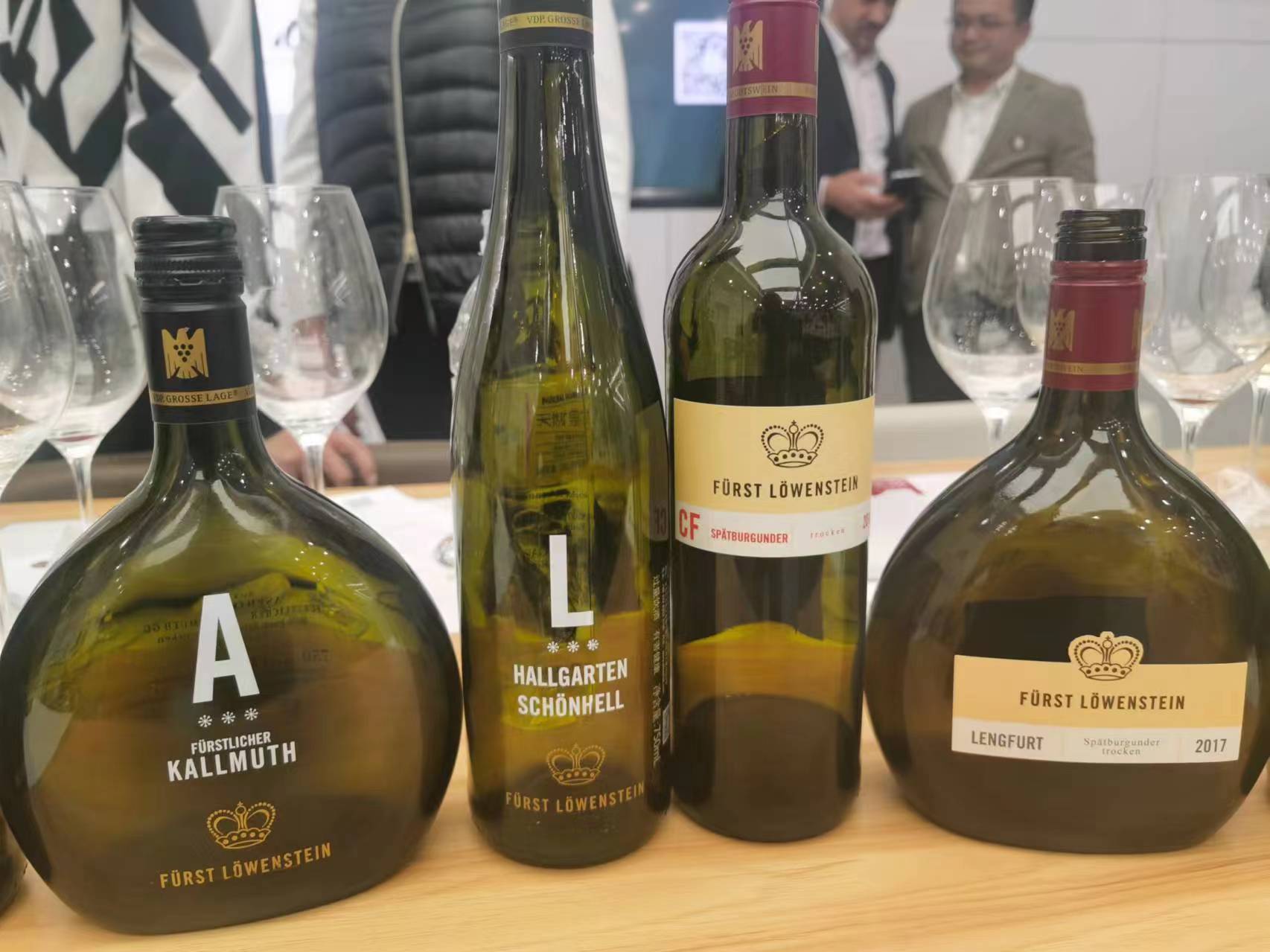
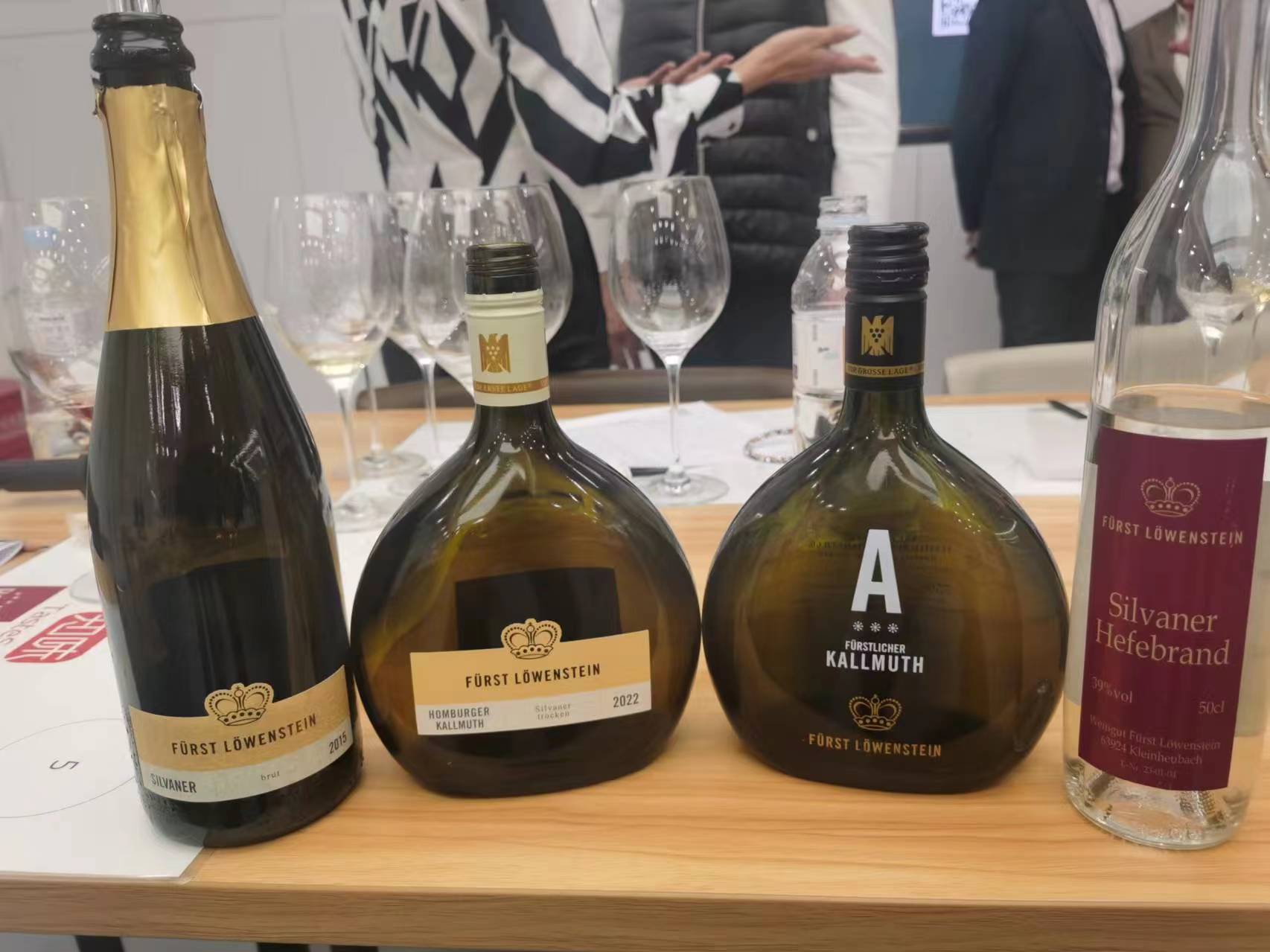

 中文
中文
